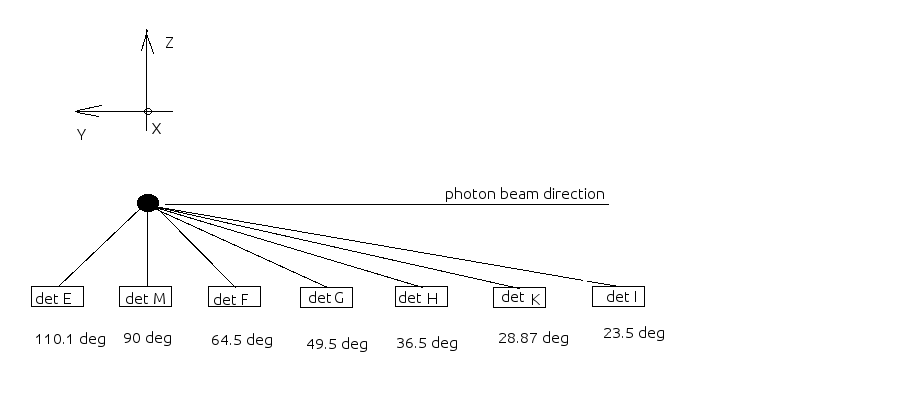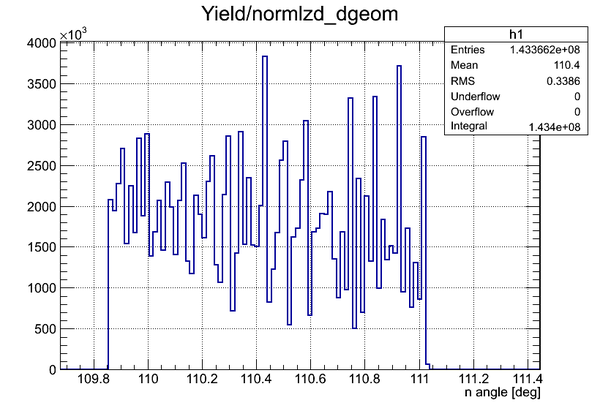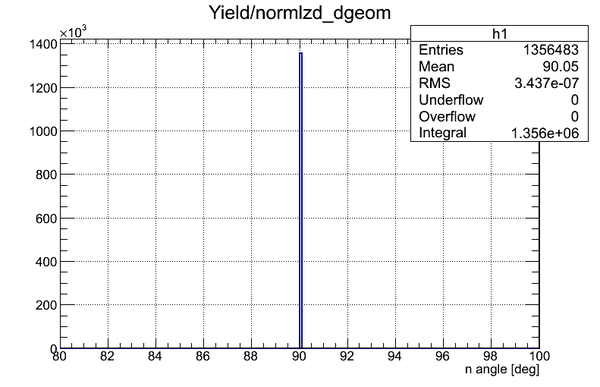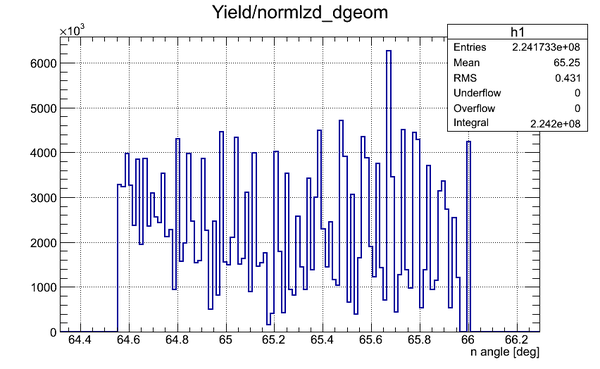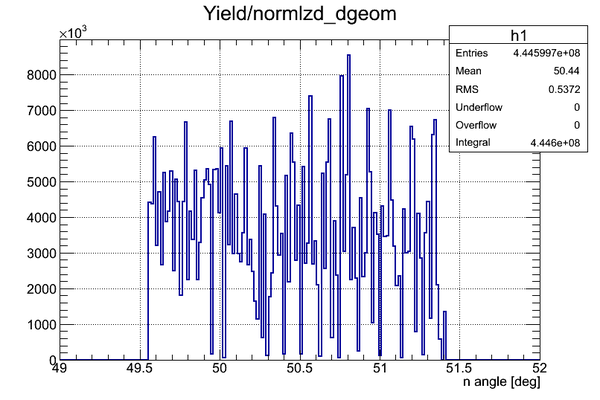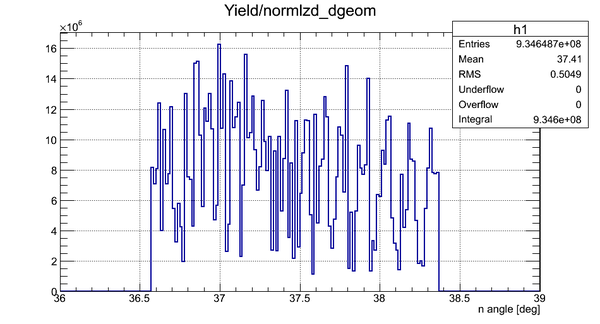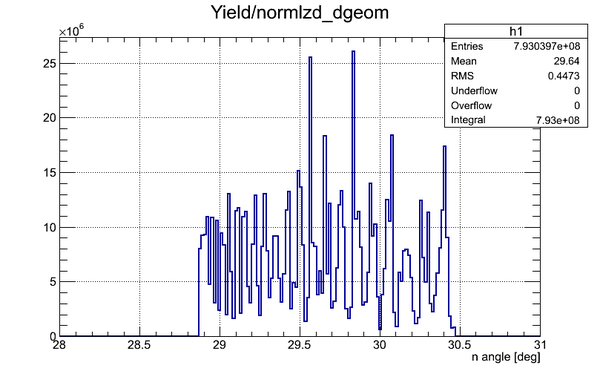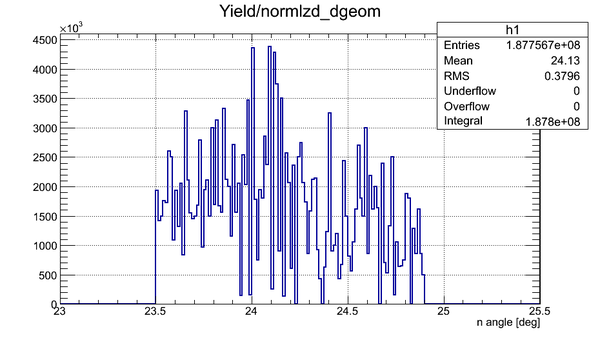Single neutron angular distribution
The data on the single neutron angular distribution were extracted from the experimental data. All production runs with DU target were processed.
It was observed the angle between single neutron trajectory hitting the detector surface in different x-coordinates and incident photon direction for each of the plastic paddle detectors. This geometry is presented below:
Below each detector there is calculated (using the geometry) value of the angle between the photon beam and the neutron central trajectory hitting the detector.
The single neutron angular distribution for each detector extracted from the experimental data and simulation is presented below.
Detector E:
| Experiment | Simulation | Simulation |
|---|---|---|
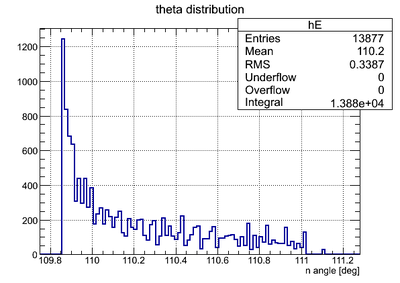
|
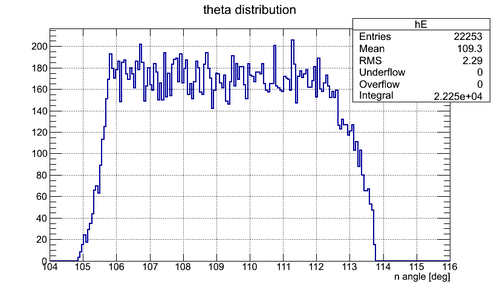
|
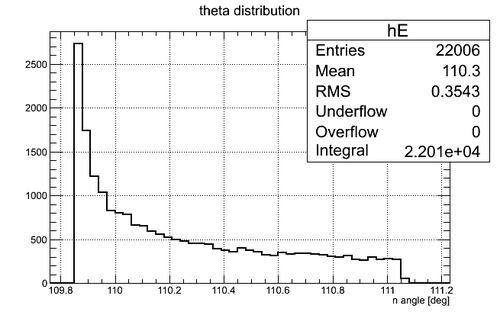
|
| Experiment | Simulation w/ y-resolution; Solid angle = 0.093 sr | Simulation w/o y-resolution; Solid angle = 0.092 sr |
After the normalization of simulated single neutron angular distribution (w/o y-resolution) to the total number of neutrons sampled and division of the experimental single neutron angular distribution by the normalized simulation data it was obtained the following single neutron angular distribution for Det E:
Detector M:
| Experiment | Simulation | Simulation |
|---|---|---|
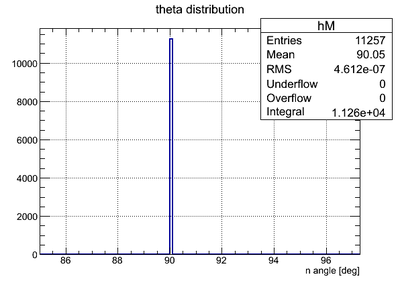
|
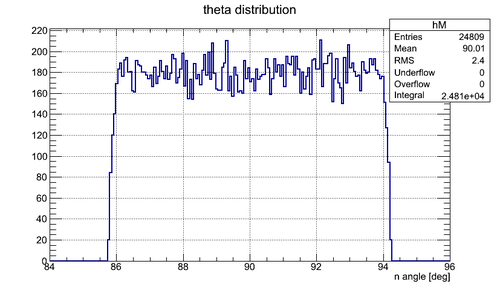
|
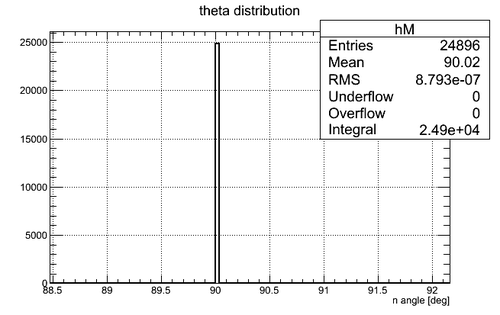
|
| Experiment | Simulation w/ y-resolution; Solid angle = 0.104 sr | Simulation w/o y-resolution; Solid angle = 0.104 sr |
After the normalization of simulated single neutron angular distribution (w/o y-resolution) to the total number of neutrons sampled and division of the experimental single neutron angular distribution by the normalized simulation data it was obtained the following single neutron angular distribution for Det M:
Detector F:
| Experiment | Simulation | Simulation |
|---|---|---|
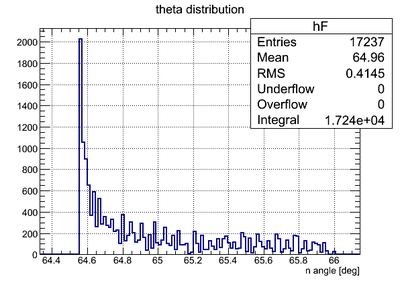
|
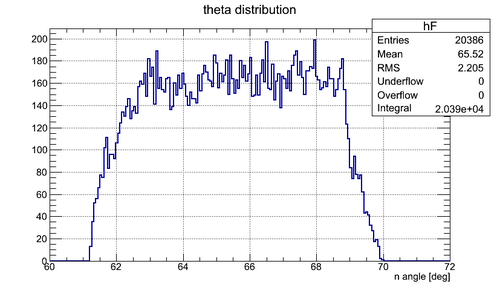
|
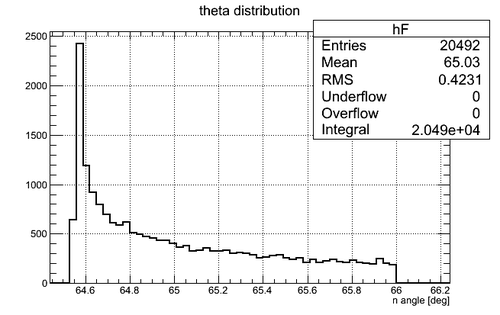
|
| Experiment | Simulation w/ y-resolution; Solid angle = 0.085 sr | Simulation w/o y-resolution; Solid angle = 0.086 sr |
After the normalization of simulated single neutron angular distribution (w/o y-resolution) to the total number of neutrons sampled and division of the experimental single neutron angular distribution by the normalized simulation data it was obtained the following single neutron angular distribution for Det F:
Detector G:
| Experiment | Simulation | Simulation |
|---|---|---|
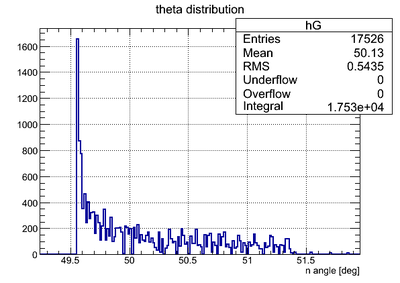
|
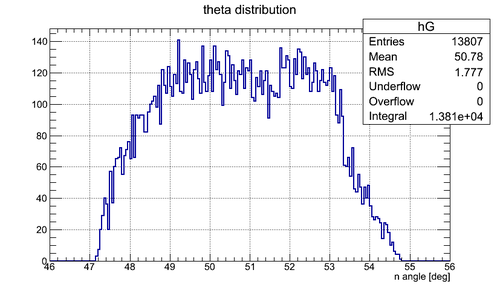
|
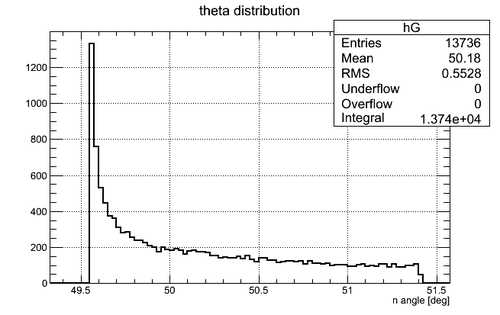
|
| Experiment | Simulation w/ y-resolution; Solid angle = sr | Simulation w/o y-resolution; Solid angle = 0.057 sr |
After the normalization of simulated single neutron angular distribution (w/o y-resolution) to the total number of neutrons sampled and division of the experimental single neutron angular distribution by the normalized simulation data it was obtained the following single neutron angular distribution for Det G:
Detector H:
| Experiment | Simulation | Simulation |
|---|---|---|
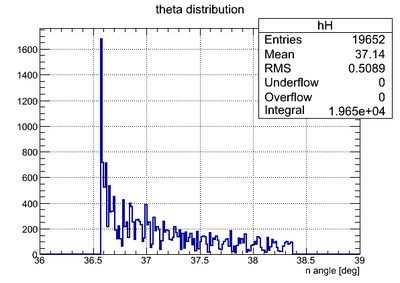
|
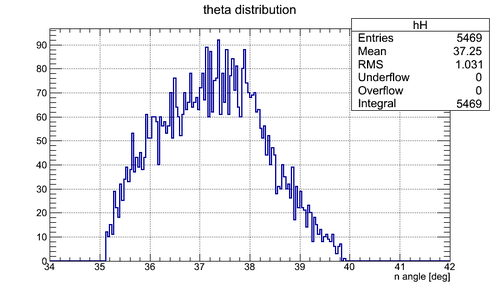
|
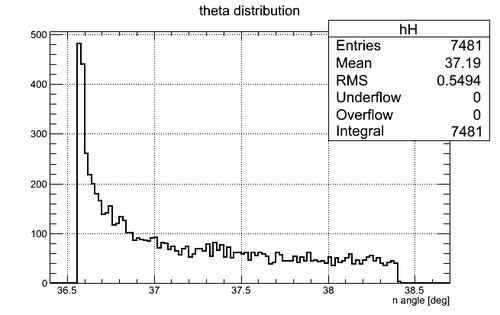
|
| Experiment | Simulation w/ y-resolution; Solid angle = 0.023 sr | Simulation w/o y-resolution; Solid angle = sr |
After the normalization of simulated single neutron angular distribution (w/o y-resolution) to the total number of neutrons sampled and division of the experimental single neutron angular distribution by the normalized simulation data it was obtained the following single neutron angular distribution for Det H:
Detector K:
| Experiment | Simulation | Simulation |
|---|---|---|
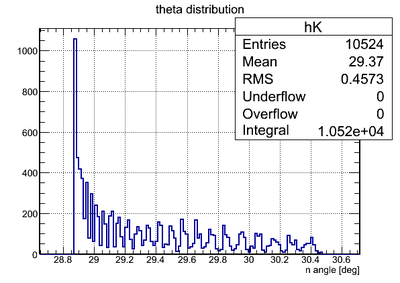
|
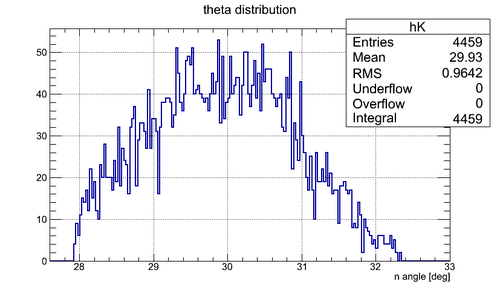
|
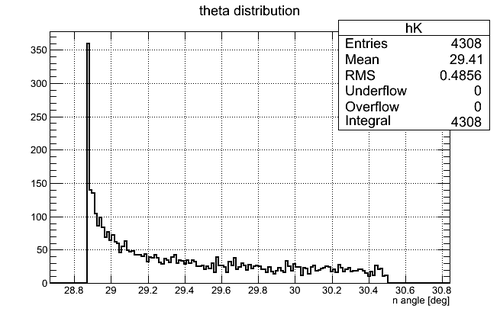
|
| Experiment | Simulation w/ y-resolution; Solid angle = 0.018 sr | Simulation w/o y-resolution; Solid angle = sr |
After the normalization of simulated single neutron angular distribution (w/o y-resolution) to the total number of neutrons sampled and division of the experimental single neutron angular distribution by the normalized simulation data it was obtained the following single neutron angular distribution for Det K:
Detector I:
| Experiment | Simulation | Simulation |
|---|---|---|
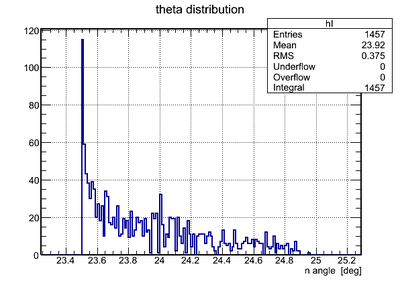
|
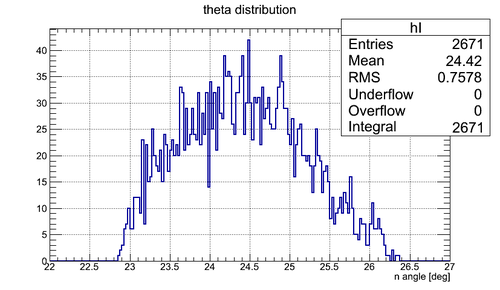
|
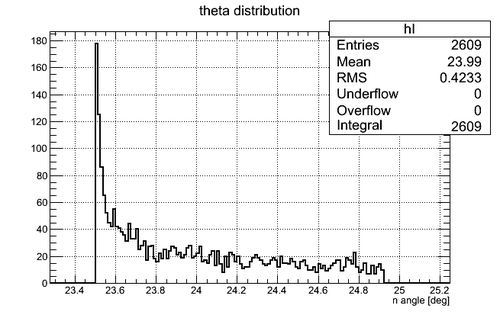
|
| Experiment | Simulation w/ y-resolution; Solid angle = 0.011 sr | Simulation w/o y-resolution; Solid angle = sr |
After the normalization of simulated single neutron angular distribution (w/o y-resolution) to the total number of neutrons sampled and division of the experimental single neutron angular distribution by the normalized simulation data it was obtained the following single neutron angular distribution for Det I:
As can be seen there is no overlap in the single neutron angular distributions for the neutron detectors.
